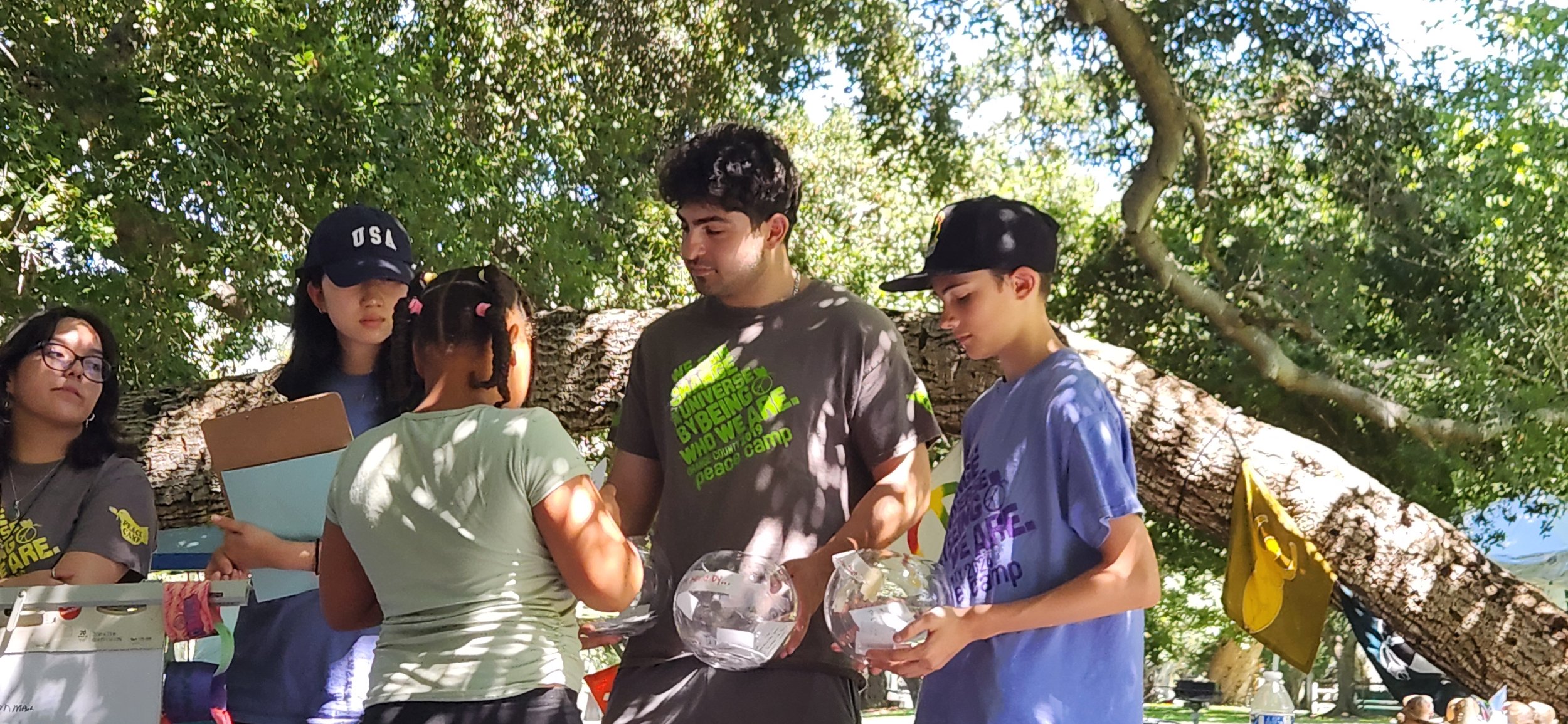Teaching Peace & Peace Camp
OC Peace Camp
Mahatma Gandhi once said, “If we are to teach real peace in the world…we shall have to begin with children.” You are probably wondering how young children can begin to understand the concept of peace, let alone be able to practice active listening and conflict resolution. The answer is Peace Camp, an organization that I have been part of since 1998. As an Orange County Peace Camp leader, I have had the privilege of supporting the youth leaders in creating curriculum for the week of camp. I not only support some administrative duties but also help with gathering materials needed for the week of camp. Being so involved has allowed me to practice techniques and strategies that I have learned at Peace Camp in my preschool classroom.
So, what is Peace Camp? Orange County Peace Camp began in 1993 by Susan Hopkins, Chris Lamm, Betsy Gibbs, and Tom Chiaramonte under the Women’s League for Peace and Freedom. It is an alternative day camp which supports children in developing and practicing active listening and conflict resolution skills. It is also an inclusive camp, where children from all walks of life can feel safe and be seen and heard. Originally, the camp was set up for children 4-6 years of age, but every year the campers returned. As the children began to get older, they expressed their need and desire to continue their peace journey. We found that what the children were experiencing at camp, they carried with them in their everyday lives. It was with that information that the founders of Peace Camp decided to increase the age range for campers from 5-17 years of age. Within the camp, some children were invited to participate in the Youth Leadership program. These were campers that turned 13 and demonstrated a commitment to peace education and advocacy. If they decided to stay after 17 years of age, they would have the opportunity to become staff leaders. Many of our current staff leaders and our two co-directors began as Peace Camp campers.
Again, you are probably wondering how young children can begin to understand the concept of peace, active listening, and conflict resolution at a camp. It begins with a theme for the week; last year’s theme was “Our Roots Go Down: Celebrating Each Other’s Origins.” During the week of camp, the children were able to be with peers within their age groups, and have discussions about topics they were curious about, such as banning books. For the older campers, they talked about political topics they wanted to know more about and through the use of “Agreements,” the campers were able to lead discussions without judgment. You are also probably asking, “Are these topics brought up by the staff?” Absolutely not. The staff and Youth Leaders function as facilitators in their conversations. When discussions get a little heated, we can support by providing techniques that can help the campers come to a resolution, or maybe a conflict negotiation. Chris Lamm once said, “Without conflict, there can be no peace.” This is something we remind the campers of during the week of camp. We also take time to be in nature and get to know each other as a camp through cooperative games. It is a memorable week for the children.
As a preschool teacher of 25 years, it has been wonderful to see my children, ages 2-6 years of age, embrace creating “agreements” together. The agreements usually begin with my introduction of, “1. Let’s take care of each other.” Soon after, the children will suggest other agreements, such as, “Let’s take care of toys.” Our classroom bookshelf has various books on diversity, family traditions, and social stories on topics such as “What can we do with our hands,” and “Our Day at the Lab School.” My co-teachers Wendy and Adrian have also incorporated techniques such as active listening during our meetings and using “I” messages.
Adrian Zamudio, one of my co-teachers, has been a camper since the age of 12. He is also one of our current OC Peace Camp directors. When I told him that I was drafting this article, he shared some thoughts on his journey. He said, “I was seriously not expecting to have this kind of level of peace camp. All the leaders, and all the youth leaders have been there for years as a camper and my year as a camper was year one. After that I was already becoming a youth leader, then eventually I became one of the leaders and now one of the directors. Some techniques I still use at home are ‘I’ messages. If there is any conflict at home between any of my siblings, I do like to be the one who calms them down. I collaborate with them one on one and that way they can communicate clearly and safely. It is so important for children to be heard. Peace camp is definitely something that children have to try. My first year, I was like one and done, but after that first year, I wanted to come back. It is something that everyone should experience.”
This article is part of our Newsletter 2025 Issue 1. See all articles.


